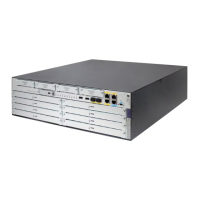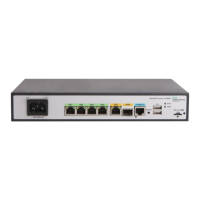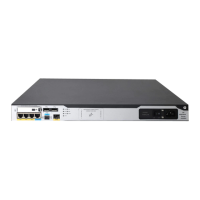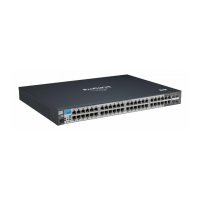443
VPN instance/VLAN ID/VLL ID: -/-/-
Protocol: TCP(6)
Inbound interface: GigabitEthernet2/0/1
Responder:
Source IP/port: 10.1.1.1/21
Destination IP/port: 20.1.1.1/11025
DS-Lite tunnel peer: -
VPN instance/VLAN ID/VLL ID: -/-/-
Protocol: TCP(6)
Inbound interface: GigabitEthernet2/0/2
State: TCP_ESTABLISHED
Application: FTP
Start time: 2014-03-13 09:07:30 TTL: 3577s
Initiator->Responder: 3 packets 124 bytes
Responder->Initiator: 2 packets 108 bytes
Total sessions found: 1
# Display detailed information about IPv4 AFT sessions on the router.
[Router] display aft session ipv6 verbose
Initiator:
Source IP/port: 2012::1401:0101/1029
Destination IP/port: 2013::102/21
VPN instance/VLAN ID/VLL ID: -/-/-
Protocol: TCP(6)
Inbound interface: GigabitEthernet2/0/1
Responder:
Source IP/port: 2013::102/21
Destination IP/port: 2012::1401:0101/1029
VPN instance/VLAN ID/VLL ID: -/-/-
Protocol: TCP(6)
Inbound interface: GigabitEthernet2/0/2
State: TCP_ESTABLISHED
Application: FTP
Start time: 2014-03-13 09:07:30 TTL: 3582s
Initiator->Responder: 3 packets 184 bytes
Responder->Initiator: 2 packets 148 bytes
Total sessions found: 1
Allowing mutual access between IPv4 and IPv6 networks
Network requirements
As shown in Figure 162, a company deploys both an IPv4 network and an IPv6 network.
To allow mutual access between the IPv4 network and the IPv6 network, configure the following AFT
policies on the router:
• Assign an IVI prefix and an IPv4 subnet to the IPv6 network. Each IPv6 host uses the IPv6
addresses formed by the IVI prefix and an IPv4 address on the IPv4 subnet.
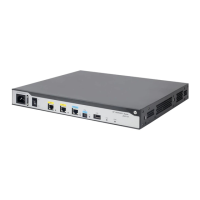
